Matador Network's Blog, page 387
November 21, 2022
World's scariest forests

There’s something spine-tingling about entering a dark, spooky forest. Whether that’s because the sun is blocked by the thick canopy of leaves, because it’s shrouded in an ever-present heavy mist, or because of the thickets of gnarled trees, spooky forests can boost your adrenaline and give you hope that maybe you’ll be the next person to stumble across an ancient, creepy relic.
When you hike through the spooky forests below from around the world, listen for the creaks and moans of heavy trunks moving in the wind and animals rusting in the underbrush — and try to keep in mind that it’s just the sounds of a tiny squirrel (probably). These nine creepy forests from around the world are the sites of drownings, murders, ancient rituals and rites, and even mysterious plane crashes. For those brave enough, here are the spookiest forests from around the world.
The Black Forest, GermanyIsla de la Muñecas, MexicoHoia Baciu, RomaniaAokigahara Forest, JapanWychwood Forest, UKDow Hill, IndiaThe Forest of Brocéliande, FranceSmolensk Forest, RussiaEpping Forest, UKWe hope you love the spaces and stays we recommend! Just so you know, Matador may collect a small commission from the links on this page if you decide to book a stay. Listed prices are accurate as of the time of publication.
Germany: The Black Forest
Photo: Andreas Zerndl/Shutterstock
The backdrop for the troubling fairytales of The Brothers Grimm like “Hansel and Gretel,” the list of legends out of these thick and dark woods is endless. From werewolves and witches to headless horsemen and underwater nymphs, Germany’s Schwarzwald has been the mythical site of many fantastical stories. These are commemorated in the region’s unique Carnival celebrations, where people dress as demons and frightening creatures.
When you visit the Black Forest, you’ll notice where the name comes from: the canopy is so thick that it blocks most of the sun, making it one of the most spooky forests in the world, even on sunny days. Most people stay in the spa town of Baden-Baden, and good hikes include the Sulzer Grenzsteinweg trail (11 miles, passes by varied landscapes) or the four-mile Ravenna Gorge Trail, which passes through lush areas before reaching a waterfall.

Photo: DaLiu/Shutterstock
When to go: You can visit year-round, but most people visit during hiking season, which is roughly April to October. In the winter, you can expect snow in parts, though it can be a lovely time if you like snowshoeing and hate crowds.Where to stay: Stay in the beautiful town of Baden-Baden, designated as a UNESCO World Heritage Site for its geothermal water. The town has everything from Christmas markets to hot springs and pretty sweet nearby mountain biking. All hotels are fairly close to the Black Forest National Park, but particularly good options include Hotel Rebstock (a traditional German hotel with an on-site winery and fabulous wooden bar and lounge) or the riverfront Atlantic Parkhotel, which feels a bit like sleeping in a German version of the White House.Mexico: Isla de las Muñecas
Photo: avf71/Shutterstock
Over 50 years ago, a man on this Mexican island was said to have seen the body of a young girl who had drowned there. He hung a doll he found floating nearby in her honor, but was so haunted but what he’d seen that he started fixating on it, eventually hanging hundreds of dolls in the woods.
Today, this spooky forest overflows with dolls and doll body parts, from disembodied heads to arms and legs pleading to be made whole. Many who come to take in the spectacle say the dolls are possessed, whispering to one another and even moving their eyes and body parts. The story of the forest has been played up quite a bit, both in written word (2016’s Island of the Dolls) and a 2018 movie of the same name.

Most travel on the Xochimilco canal is done via colorful trajinera boats. Photo: Bobby Esquivelzeta/Shutterstock
If you’re planning to visit, you’ll need to book a tour or charter a boat from Mexico City; the trip to get there takes about three hours. But make sure to do your research: enterprising locals have realized tourists want to visit and created additional islands full of hanging dolls for tourist photo ops, but they aren’t the real thing. Here’s the one you want.
When to go: You’re good to go year-round. It’s Mexico, so the weather is pretty great year-round.Where to stay: Island of the Dolls is close to Mexico City, so you won’t hurt for places to stay. But since you’ll be getting a boat from the Embarcadero Cuemanco Xomichilco, you may want to stay near there. it’s a huge city, so if you stay in the historic part of town you’ll still be about 45 minutes from the docks. So you’ll want to stay in the south part of the city near Xochimilco Ecological Park. An Airbnb may be a good bet since most of the hip tourist hotels are closer to the Old Town, Polanco, or La Condesa.Romania: Hoia-Baciu Forest
Photo: Daniel Mirlea/Shutterstock
Allegedly named after a shepherd who mysteriously vanished (along with 200 sheep), this is one of the can’t-miss spooky forests in Eastern Europe. It’s sometimes called “The Bermuda Triangle of Transylvania,” which should give you an idea of how many mysterious events have occurred in the area. Visitors have reported feeling anxious when they visit the forest, experiencing nausea and even rashes. Locals are said to stay well clear of the misty forest and its eerily curved trunks and branches.
That said, if you do want to visit, you have lots of options. You can book night hikes or overnight camping trips, complete with spooky stories and legends, or take a more “scientific” tour with EMF meters and Geiger counters. You can also go to the 730-acre park on your own if you just enjoy hiking or biking (there’s a relatively new bike part in the forest). But even if you don’t care about the supposed legends that make it one of the world’s most spooky forests, you should try visit the “dead zone,” near the center of the park, where it’s said no vegetation will ever grow.

Photo: Zagrean Viorel/Shutterstock
If you’re into learning about cultures, stop by the open-air Ethnographic Museum of Transylvania, only a few minutes away in Cluj-Napoca (usually just called Cluj).
When to go: Late May through early September is the busy tourist season in Romania, probably because it has the nicest weather. September and October are still nice, but it tends to rain more. April is usually a little brisk, but a more affordable and less crowded time to visit. Winter is tough and many tourist facilities close as it is cold with frequent rain and snow.Where to stay: Stay in Cluj. Hotel Capitolina City Chic is colorful, comfortable, clean, and near everything in the Old Town, and Hotel Beyfin is a boutique hotel with a rooftop bar and art and decor from throughout Europe.Japan: Aokigahara Forest
Photo: kt-wat/Shutterstock
Another forest featured in a recent Hollywood movie (The Forest, 2016), this spooky forest is near beautiful Mount Fuji — but it’s hardly as peaceful. A sign at the forest entrance reminds visitors that life is precious and to seek help if they need it. Why? Well, it’s the site of more suicide attempts — hundreds of them successful — than nearly any other place on Earth.
Beyond that tragic fact, the trees are so tightly packed together that it’s hard to see or hear anything, leaving even seasoned hikers disoriented. They’ll use string or other markings to ensure they can make their way out as it’s said that iron deposits below ground render compasses all but useless. While this is certainly one of the most spooky forests in the world for that fact alone, there actually is some scientific proof. In 2014, a group of researchers used Japan as a case study and posited that Japan’s geomagnetic disturbances could lead to an increase in suicide rates.
Somewhat morose data aside, the forest is objectively quite lovely and a wonderful place for a hike. The Aokigahara Cave Trail is quite popular for hiking and, at 6.4 miles, winds through many of the forest’s prettiest vistas.

Photo: Norikazu/Shutterstock
When to go: You can go year-round, but winter is the slow season and many restaurants and hotels may be closed, especially closer to Mount Fuji. Summer is the best time for hiking, but also the busiest.Where to stay: Since you probably won’t spend more than half a day in the forest, consider staying closer to Mount Fuji and using the mountainous area as a base for other outdoor adventures like hiking or biking. The Fuji area is the perfect place to stay in a ryokan — traditional Japanese hotels with tatami mats and bedrolls rather than Western-style furnishings. Winning choices near one of Asia’s most spooky forests include Hotel Asafuji, which offers traditional multi-course Japanese breakfasts and views of Mount Fuji, or Lakeland Hotel Mizunosato, with indoor and outdoor hot springs. You can also visit the forest on a day trip from Tokyo.UK: Wychwood Forest
Photo: Vic Powles/Shutterstock
According to lore from more than 400 years ago, wife of Earl of Leicester Amy Robsart broke her neck and passed away in unexplained circumstances near this forest. Much later, the earl was hunting in the Wychwood Forest and encountered her ghost, who told him he would soon join her in the hereafter. He was then said to have fallen sick and died.
Now, legend says that other people daring to hike in one of Europe’s most spooky forests will meet the same fate if they see Amy Robsart’s apparition. Visitors to these allegedly haunted woods have reported the feeling of being touched by hands and the sensation of hearing running horses. With a name like Wychwood, these eerie legends certainly leave you wondering if these woods are best left unexplored.
If you want to experience the paranormal in the forest, walk a section of the 37-mile Wychwood Way Circuit, or take the seven-mile route past the forest’s ponds. It’s a gently rolling walk and a lovely place to spend some peaceful time outside in the English countryside.

Photo: Andrei Nekrassov/Shutterstock
When to go: This is another possible year-round destination, but December through February tends to be wet and rainy, and sometimes snowy. Summer is prime for hiking, and late spring tends to be a bit busy as students from nearby Oxford University finish exams and families come to (hopefully) watch them graduate.Where to stay: The closet town is Oxford, a beautiful historic city with the lovely Oxford Castle and a few great museums. The Old Parsonage Hotel is a luxury hotel in a manor from the 16th century, complete with daily afternoon tea.India: Dow Hill Forest
Photo: Saurav022/Shutterstock
Many murders are said to have taken place in these ominous, mist-filled woodlands. Reports claim that those who enter feel they are being watched, and some have even spied a red eye gazing at them — and have caught a fleeting glance of an apparition in an ash-colored dress. Even the India Times Paper has covered the legends of the region’s spookiest forest.
The most oft-heard rumor is of a headless boy walking on his way from the forest along “Death Road” to the Dow Hill Victoria Boys’ School, itself considered one the most haunted locations in India. Residents who live nearby say they hear sounds emerging from the school even when there are no students there.
When to go: Year-round is just fine. Though it’s at the foothills of the Himalayas, it still doesn’t get very cold. The chilliest month is January, but it still averages 60 degrees Fahrenheit during the day.Where to stay: Stay in Darjeeling. If you’re a tea fan, you already know why Darjeeling is well-known: it’s home to a huge percentage of India’s tea farms and forests. Considering staying at The Elgin, a luxurious (and sustainable) property very close to downtown. However, you can also stay on tea farms like Singtom Tea Estate or Sourenee Tea Estate.France: The Forest of Brocéliande
Photo: MattLphotography/Shutterstock
According to Celtic legends from the Middle Ages, this spooky forest in northern France has a mystical aura. In fact, some believe these woods are the thosr from the legends of King Arthur. The wizard Merlin was said to have been briefly imprisoned in an invisible tower here and is thought to be buried at a mysterious location widely called the “Tomb of Merlin.”
Also in the park is an ancient spring once used as a place of worship from Druids (the “enlightened” class of early Celtics), though it’s now known as the fountain of youth. The forest is also the site of the “Gate of Secrets” a few times a year. It’s a visual and artistic experience that takes place along the forest trails.
There’s quite a bit to do in this area, including activities specifically focused on exploring the “haunted” aspects of one of France’s most spooky forests. That includes storytelling bike rides, hikes to the various historical and notable (i.e., haunted) sites, and even visiting a traditional nordic farm.

Photo: Unai Huizi Photography/Shutterstock
When to go: The forest is in northwestern France, so it’s what you’d expect: nice from spring to fall, and a bit cold and sometimes rainy in the winter. That said, there’s not a huge difference in how often it rains between summer and fall, so base your trip on when is good for you rather than any particular season (though it can be busy during European school vacations).Where to stay: If you want to spend a few days exploring one of Europe’s most spooky forests, stay in Paimpont (though the closest train station is about 40 minutes away in Rennes). You can actually camp in the forest for a reasonable four Euro per night. But if that’s not your jam, the cutest hotel in town is probably the Logis Hotel Le Relais De Broceliandel, within walking distance of forest trails.Russia: Smolensk Forest
Photo: 1722964393/Shutterstock
This isn’t just one of the most spooky forests in the world as far as legends go — Smolensk Forest was actually the site of a major massacre. It was the Katyn Massacre from WWII, during which Stalin’s army murdered more than 20,000 Polish soldiers and military leaders — all of whom are buried here.
But that’s not even the end of it: in 2010, a plane carrying nearly 100 of Germany’s most important political and business officials crashed here, killing everyone on board. It was a shocking day for the people of Poland, for whom this scary forest was already the site of a painful history. You can forgive them for believing that this patch of Earth is cursed.
When to go: Anytime, as long as it’s pretty far into the future. Americans need a tourist visa to visit Russia, which you’ll have to apply for well in advance. You can’t just roll up for the day and go hiking.Where to stay: If you’re able to score a visa, your best bet is to stay in Moscow and do a day trip. Especially cool hotels include the Moscow Four Seasons — which possibly has the city’s best views from the upper floors — or the strikingly pretty Myasnitsky Hotel, just a few minutes from the city’s famous Red Square.UK: Epping Forest
Photo: H1nksy/Shutterstock
Epping Forest is a 4,000-acre old-growth forest near London — and it’s because of that proximity that so many members of London’s underbelly have used the forest as a haven for crimes, including murder. More than a dozen such victims have been discovered in this spooky forest in the last half-century. While records on the crimes can be a bit hard to track down, at least one murder took place in the forest itself (at the hands of a notorious highwayman Dick Turbin).
Many of the trees here haven’t been cut in nearly 150 years, following legislation to protect the area, leaving them with weirdly deformed shapes. Add in reportedly creepy sounds and ghostly sightings, and this is one hair-raising walk through the woods. And speaking of walking: there are about 30 different trails through the forest, as well as some mountain bike routes.

Photo: Paul Abrahams/Shutterstock
When to go: The most popular trails in this forest are always crowded as it’s one of the closest areas for hiking near London. It’s less about what time of year you go and more about when: visiting midweek will give you much more space to yourself than going on a Saturday afternoon.The forest is only about 30 minutes north of London, but with traffic, it can take a lot longer. So look for lodging in the London suburb of Chingford, which is only a few minutes from the main forest trails and visitor center. Since there aren’t a lot of hotels in that area, an Airbnb is probably your best bet. Here’s a quick guide to 18 of the best Airbnbs in London. More like thisEpic StaysThe 6 Coolest Historical Hotels That Used To Be Brothels
More like thisEpic StaysThe 6 Coolest Historical Hotels That Used To Be Brothels
From Museums To Medieval Castles, Here’s What You Can’t Miss in Prague

Prague is often described as a city from a fairy tale and is one of the most architecturally interesting and charming cities in Europe. It is a small city packed with history that reflects of the Czech Republic’s rich culture. It feels like an open-air museum. You’ll love Prague’s world-renowned spas, fairy tale Baroque castles, palace gardens, panoramic views, rivers, Gothic cathedrals, museums, Czech cuisine, and not to mention drinking the what some devotees of the country call the best beer in Europe.
The best time to visit Prague
Another view of the Charles Bridge and the Vltava river. Photo: Anne Carney
The best times to visit Prague are the spring and early fall. The weather is perfect and there are fewer crowds. Central European weather is surprisingly warm in September and October. It makes for pleasant walking tours, catching the seasonal markets, outdoor activities, and photogenic landscapes. You can walk anywhere in the city; a light jacket and comfortable shoes are all you’ll need to thoroughly enjoy the sights.
How to get to PragueIn the heart of Central Europe, Prague is easy to access by both plane and train. From the US, it’s about a 12 hour flight. As you arrive, don’t sleep on the view as it overlooks nearby connecting rivers and the city center. It’s a fitting first impression of Prague’s magnificence. Václav Havel Airport is just a half hour by car to Old Town – otherwise known as Staré Mesto, the cobblestone downtown area of Prague. The city is known to be exceptionally safe, great for couples, solo travelers, families, and pets.
How to get around PraguePrague is one of the most walkable cities in Europe. Old Town is mostly pedestrian and the entire center is less than four miles across. Recognizable landmarks make finding directions easier than most cities. Soak up the sights by taking a city walking tour. Prague has a great local transit system, as well. Most of the sights border both banks of the Vltava River and are easily accessible by local bus. If you want to take a day trip, you can easily travel outside of the city via train.
What to do in PragueExplore the outdoors
Photo: Anne Carney
There is a full roster of fun outdoor activities that can be experienced in a day around Prague. The capital city is surrounded by the Vltava River where you’ll see beach goers and boaters.
Hiking tours are popular especially in the north of the city, as are day trips to Bohemia, the countryside, and national parks, including Bohemian Paradise. This UNESCO-protected park is just 23 minutes from Prague and features natural rock formations called the Prachov Rocks.
In the winter, go ice skating on Charles River, cross country skiing, and play ice hockey. For the adventure seeking aficionados there is rock climbing, beer rallies, water rafting, and the world’s longest pedestrian suspension bridge, Sky Bridge 721.
Explore Prague’s Old Town Square
A state of Franz Kafka, who was born in Prague, and Prague Castle. Photo: Anne Carney
Old Town is in the heart of Prague and feels like a 3D architecture book. In this area, you’ll find the Baroque Church of St Nicholas, the Kinský Palace (now an art gallery), and the Stone Bell House. At the top of the Prismatic Tower is a viewing gallery with panoramic views of Týn Cathedral, Saint Nicolas ́Church, and Prague Castle – the former home of several Holy Roman emperors and the current official office of the president of the Czech Republic. In Old Town you can also visit the historic Jewish Quarter, the city’s medieval-era astronomical clock, and lively shopping square.
Prague Castle is worth its own visit. One of the most notable national and cultural monuments in the country, Prague Castle is a monumental complex with impressive fortifications representing all architectural styles and periods. It is made up, in part, of Romanesque-style buildings from the 10th century. It’s also the home of the official bi-annual meeting of the EU. Enjoy lunch at the Lobkowitz Palace café & restaurant. The menu features Czech and international cuisine served on an outdoor terrace featuring a panoramic view of Prague.
Explore Prague’s Lesser TownMalá Strana, also known as Lesser Town, is a hillside area of Prague with views of the Vltava River and Old Town. The narrow streets are filled with casual eateries, bakeries, traditional pubs and cafes. Stop by the famous John Lennon Wall where you can see written messages to the late musician. The riverside Kampa area offers fine dining, museum exhibits, and the kinetic sculpture of Franz Kafka – the legendary writer was born in Prague. Be sure to walk through the Wallenstein Gardens where peacocks roam freely and large koi can be seen splashing out of the pond.
Walk across the Charles Bridge
Photo: Anne Carney
Walk across a stunning medieval stone bridge that covers the Vltava river in Prague. Until the mid 18th century, Charles Bridge was mainly a trade route and the only way to cross the river Vltava. It is the oldest bridge in Prague. The bridge itself is almost 520 meters long and nearly 10 meters wide, and is made from local sandstone. The bridge is decorated with imposing statues of Catholic saints, including St. John the Baptist and St. Francis of Assisi.
Sight see at national monuments
Photo: Anne Carney
The Petřín Funicular Railway links the Malá Strana district with Petřín Hill, a park of pathways and gardens at the center of the city. You’ll arrive at the base of a magnificent steel tower almost 65 meters tall that was built in 1891 to resemble the Eiffel Tower, measuring three meters higher. Today the tower is a major tourist attraction but historically was used as an observation and transmission tower. At the top of Petřín Hill visitors can take part in a Monastery walking tour, and or explore the Strahov Monastery Brewery, which was established in the 17th century.
Experience a Prague Glass Workshop
Photo: Anne Carney
In the heart of Prague you can discover and experience the world of glass art in every form. Watch while the masters of glass show you their process. You get to try blowing your own piece of glass and learn traditional artisan techniques. Afterwards, take home your own glass piece, and snap pictures as you melt and torch glass. In the gallery you can explore the collection of glass sculptures made by Czech artists, and watch live demonstrations while enjoying a beer.
See a show or take an art tourPrague has a variety of literary, art, and music tours. Catch a performance of the Abrakadabra Black Light Theatre or take an art tour at the World of Banksy exhibit. There are also many magnificent theater, art, and music halls including the Rudolfinum and the Municipal House for performances and classical concerts.
The Mucha Museum celebrates over two hundred original works from Alphonse Mucha, a world-acclaimed painter of Czech Art Nouveau. The collection presents his works and life story as told through selected pieces, sculptures, and photographs. The tour takes about an hour and you can get a discount if you purchase your tickets in advance online.
Go wine tasting at St. Wenceslas Vineyard
Church of Mother of God before Týn in Old Town Prague and the glasshouse restaurants inside the St Wenceslas Vineyard. Photo: Anne Carney
Enjoy this spot for wine tasting with unbroken panoramic views of the Old Town and the Lesser Side. St. Wenceslas Vineyard is said to be the oldest vineyard in Bohemia (established in the 10th century). This picturesque vineyard in the middle of the city is perfect for a day visit or special event. It’s located on a scenic hillside which overlooks the vineyard. There are three restaurants where you can drink and dine while taking in the city sights. In the center of the vineyard is Villa Richter, a panorama pergola restaurant. You’ll find Czech and Moravian wines on the menu. On the ground floor, the restaurant Piano Nobile is located inside a glasshouse. Catch sunset from the Northern and Southern Terraces at the Piano Terra restaurant.
Experience a fairytale at Castle Blanta
Castle Blatná (two hours outside Prague) and Petřín Lookout Tower in Prague. Photo: Anne Carney
Castle Blatná feels like a real life fairytale. Just an hour south of Prague, it’s well worth a visit. The entrance towers and dreamy castle bridge exude luxury inspired by European nobility. The three floor Gothic palace is currently owned by the Hildprandts family, who have been working with historians on castle restoration.
The family is still finding secrets among the grounds including a gothic chest that was buried deep inside the moat, a hidden cellar, and most shockingly, the remains of a lady within the tower walls discovered during renovations. In the beautiful castle park you can spot a large resident herd of freely grazing deer, pettable alpacas, and peacocks.
Explore South Bohemia and Třeboň
Photo: Anne Carney
South Bohemia is considered a land of lakes and castles. Whether you spend time sightseeing or relaxing, a must visit is Třeboň near the Austrian border. The nearby Šumava Mountain range creates the rivers that wind below. The landscape is full of deep forests, large meadows, and charming ponds. The air is sweet with the smell of spruce, oak, birch, and pine. Třeboň is a quaint town with a local spa tradition and many historical monuments and activities to explore nearby.
In Třeboň, a pathway through a pine and aspen grove leads to a pond. Just before the entrance to the pond is a large outdoor local market of fresh fish, produce, and sweet smelling deserts. At the pond you’ll see fishermen drain, sort, and collect fish collected into long nets. The protected Třeboň carp farms and the pond itself is one of hundreds of fish ponds, rivers, and canals gradually built up from the 15th century located throughout Prague.

Photo: Anne Carney
While in Třeboň, which is just an hour and half drive from Prague, make sure to take a tour of the Schwarzenberg Tomb. The neo-Gothic structure near Třeboň is located in the middle of a landscaped park, near a fish pond. Built in 1877, the Schwarzenberg tomb is the burial place of one of Bohemia’s most powerful noble families. The perimeter of the park is met by forest, an inviting storybook path, orange aspens, and benches scattered along the way.
Relax at a Beer Spa and Microbrewery in Pilsen
Photo: Anne Carney
Pilsen is the Czech Republic’s most iconic beer town. It’s the cultural and social capital of Western Bohemia and is only an hour drive southwest of Prague. On every corner of Pilsen you’ll be surrounded by baroque architecture, fountains, and historical monuments. At the town’s center is a lively square of artisans, vendors, and markets. In winter, the square is taken over by holiday markets. There is also a yearly celebration of the Pilsen liberation, in honor of the civilian uprising against occupying Nazi forces in May 1945.
Just outside of Pilsen is the Purkmistr Hotel, restaurant, and beer spa. Built on a former farmstead from 1603, the wellness and beer spa is a luxurious yet cozy private experience that leaves your spirit refreshed and body exfoliated.

Pastel colored historical buildings in Pilsen, about an hour outside Prague. Photo: Anne Carney
There are a large variety of treatments including your choice of beer, peat, chocolate, hop, lavender, or cannabis bath. The bathtubs are filled with a special mixture containing Pilsner beer and infused ingredients. A wooden barrel of Purkmistr 12° lager on tap is placed next to the wooden bath for your enjoyment.
Visitors to Pilsen praise the Hotel Purkmistr’s restaurant and microbrewery. At Purkmistr, guests can enjoy traditional Czech cuisine and a variety of beers on tap. The world’s first pale lager debuted here in 1842 so don’t forget to taste the world-famous Pilsner lager.
Explore Český Krumlov
Photo: Anne Carney
Less than an hour from Trebon, you can visit a lively, medieval town surrounded by unspoiled countryside. Dominated by a castle which overlooks the meandering Vltava river, Český Krumlov’s narrow cobblestone streets wind along romantic nooks between aristocratic houses. Visitors should pay special attention to the stunning architectural detail and castle moat that is home to three rescued brown bears.

The town of Český Krumlov, two hours outside Prague. Photo: Anne Carney
The Museum Fotoatelier Seidel is also located in Český Krumlov. The exhibit itself feels like going back in time. The building itself is photographer Josef Seidl’s studio and home, which he used in the 1880s. It is filled with his works, photo equipment, and journals. Visitors can pursue his photographs, glass plate negatives, cameras, darkroom, and enjoy the period ambiance. The tour concludes with a themed period photography session in the studio.
Where to eat and drink in Prague
Photo: Anne Carney
Restaurant MlynecRestaurant Mlynec is one of the best in Prague with modern Czech and international cuisine. It has a lovely terrace with a view of the river and Charles Bridge. Helmed by Chef Vladimír Vaníček, the restaurant is known for using traditional Czech cooking techniques with local ingredients.
Bílý KoníčekFamily-run Bílý Koníček cafe is in the magical Old Town Square, and is located inside a 12th century medieval cellar. The menu features local fish and an extensive wine list with German, Austrian, and Hungarian selections. It is in one of the oldest buildings on the square and the perfect spot for a touch of old-fashioned romance while dining with live jazz or blues in the background.
Municipal House RestaurantReservations are recommended for dining at the famous Municipal House Restaurant. It is known as the most beautiful Art Nouveau restaurant in the Czech Republic with stunning chandeliers, wood furnishings, and murals on all the walls. Guests will experience a traditional 3-course Czech dinner in ornate surroundings with live music.
Šupina a ŠupinkaThe Šupina a Šupinka restaurant in Trebon is worth a visit, although it’s not in Prague. The restaurant’s Müller family shares 20 years of culinary tradition and experience with patrons. Order the famous carp tartar or try the carp fries. Other local favorite dishes are the catfish and fish soup. For dessert try the pudding, cheesecake, or parfait.
Where to stay in Prague
A room inside the Hotel OldINN and Hotel Mozart (exterior). Photo: Anne Carney
Hotel MozartRelax at a gorgeous five-star landmark hotel steps from the Charles Bridge. Hotel Mozart is a distinct and vibrant mainstay of local art, music, and history. Prestigious guests from politicians to Hollywood stars have been known to stay at the property. Guests delight in hearing stories of hotel history, legendary Aristocratic parties, and royal courtyard concerts held over 300 years. Mozart and Casanova were both guests of the hotel. Legend has it that Mozart wrote his 6 German Dances in one of the hotel rooms. The hotel restaurant is elegant and delicious. There is an underground wellness center for a serene spa getaway during your stay.
The K+K HotelThe K+K Hotel is centrally located in Prague’s historic Old Town and steps away from the Powder Tower, a Gothic tower that was once part of a gate that separated the Old Town from New Town. It is one of the oldest Art Nouveau buildings in the city featuring elegant interiors and friendly hospitality. Many historical sights including the city’s Jewish Quarter, are within walking distance of this hotel.
The Hotel OLDINNIf you plan to visit Český Krumlov, stay at the Hotel OLDINN. This hotel is modern, elegant, comfortable, and pays homage to this city’s stunning architectural heritage. The hotel appeals to sophisticated travelers seeking a charming local experience. The hotel has a relaxing atmosphere and beautiful rooms with views overlooking the square, shops, and landmarks. It’s walking distance to the town square and the must-see Castle Krumlov. 
This Tiny Canadian Town Is the Heart of Hallmark’s Holiday Movies

What do candy cane makers, gingerbread bakers, and corporate accountants have in common? Why, they’re all desperately looking for love, of course! Or, at the very least, this is what made-for-TV holiday movies tell us. These delightfully formulaic productions from Hallmark, Lifetime, and other studios take idyllic small-town life, add in a dash of chaos via the big city exec, and wait for sparks to inevitably fly. Viewers can be assured of two things: A happy ending and some gorgeous Christmas scenery.

Photo: Vanessa de la Cruz

Photo: Caroline Hayes

Much of that gorgeous Christmas scenery is provided by the small town of Almonte, Ontario, which has dubbed itself as “mini Hollywood North”. This community of about 5,000 people is located less than an hour from Canada’s capital city of Ottawa and has appeared on screen playing the role of a quintessential small town in Vermont, Maine, Alaska, and dozens of other locations. Its picture-perfect combination of small shops, grand stone buildings, and beautiful natural scenery complete with a river has been featured in productions like Christmas Around The Corner, The Rooftop Christmas Tree, Unlocking Christmas, Christmas Festival of Ice, Christmas Scavenger Hunt, A Cheerful Christmas, A Christmas Stray, Under The Christmas Tree, A Chance For Christmas, Maps and Mistletoe, and many more. Best of all, anyone can visit (even if you’re not looking to seduce a Christmas tree farmer!). Here are some movie-worthy spots that all travelers should check out.
The most romantic spots in Almonte, Ontario are on Mill Street
Photo: Ryan Gordon
If you’ve watched any made-for-TV holiday movie in the last few years, you’ve undoubtedly seen the pretty shops and charming facades of Almonte’s Mill Street, including in productions like Christmas Festival of Ice and Fireside Pictures’ Christmas Explorer. As the main thoroughfare of the town, Mill Street is the place to visit to hang out with locals, catch up on gossip, and maybe fall in love with a dashing hardware store employee or bookstore proprietor.
Some must-visit romantic spots on Mill Street include L.G. Lee and Sons hardware store. While it looks more than a hundred years old, this character-filled wee shop only dates to 2015 and is a division of Lee Valley Tools. It made an appearance in Unlocking Christmas and its winsome interior all but guarantees it’s going to be in many more movies in the years to come.
In Mill Street Books, the staff will happily share information on the various productions the store has been featured in (sometimes looking very much like it appears today, and other times getting a complete makeover from set decorators). In addition to having an excellent selection of local and international titles, they also host author readings and a book club (and if that doesn’t set the stage for some romantic encounters, what will?)
Another delightful spot in Almonte, Ontario, is Cheerfully Made, an adorable little shop so beautifully curated that you’ll think it’s about to be featured in some filming when you see it. Nope, that’s just how cute it is all the time! It highlights local makers and creators and is the place to go for a pretty piece of jewelry, some romantic scented candles, or even a cozy blanket.
Other Almonte, Ontario, landmarks featured in holiday moviesThe Mississippi Valley Textile MuseumThe Mississippi Valley Textile Museum is a unique attraction mandated with interpreting the history of the woolen textile industry in the area and the effect it had on the social, cultural, and industrial development of the region. In doing so, they provide exhibitions and education on fiber arts and provide research facilities for those who are studying industrial textiles. There’s not another museum quite like it and their physical space is absolutely beautiful, with tall windows, bright white walls for the exhibition space, and rare pieces of antique machinery. Unsurprisingly, the interior is in demand with filmmakers and it has appeared in Hallmark’s Unlocking Christmas and A Cheerful Christmas.
Cedar Hill Christmas Tree Farm
Photo: Cedar Hill Christmas Tree Farm
Is there a single holiday movie that doesn’t have a pivotal scene at a Christmas tree farm? Holiday film fans will adore Cedar Hill Christmas Tree Farm, which is located about 30 minutes from Almonte, Ontario, in Pakenham in the same province. The property has been featured in productions with Hallmark, Lifetime, and other studios. Winter visitors will enjoy their holiday-perfect treats and activities, including sledding, bonfires, and hot cocoa. Pam Martin, who owns the farm alongside her husband Grant, says: “I think what makes the region special for films to be shot here is that Almonte and surrounding areas feel quaint yet authentic in their small-town charm and genuine friendliness.”
North Market CafeIn just about every made-for-TV holiday movie there are some cozy diner scenes, usually featuring scheming mothers who just know their children will be a perfect romantic match. Whether you’ve got Christmas matchmaking on your mind or simply love breakfast tacos, inventive salads, and hearty sandwiches, the North Market Cafe is the place to go. It made an appearance in Christmas Around The Corner – but not as a cafe. The pretty space was transformed into a bookshop for filming.
Where to stay in Almonte, Ontario for a cozy vacationWe hope you love the places we recommend! Just so you know, Matador may collect a small commission from the links on this page if you decide to book a stay.
The Almonte Riverside is a microhotel with six rooms situated in a heritage estate, complete with views of the river and a short, scenic walk to Mill Street. It’s exactly the kind of spot that an out-of-town VIP intent on shutting down the local candy store would stay before finding local love! The “Judge’s Chambers” is a particularly nice room, complete with a fireplace, sitting area, floor-to-ceiling windows, and a spacious bathroom.
Menzies House Bed and Breakfast is a bed and breakfast dating to the 1850s that offers homemade breakfast. When an unexpected blizzard detains some mysterious guests on the night before the big Christmas pageant, this is where they’d stay. Situated right across the street from the Almonte Riverside, this stately home has white siding with black shutters, a pretty outdoor space with saltwater pool and garden gazebo, and inside there’s both a fireplace and a library for cozy nights. 
November 18, 2022
6 Romantic Luxury Hotels in Italy With Fairy-Tale Views

Italy attracts millions of tourists every year who come to see jaw-dropping landscapes, indulge in food and wine, and soak in a wealth of history. This is true just about everywhere in the country, from the rolling hills of Tuscany, to medieval powerhouses like Rome, to majestic active volcanoes like Mount Vesuvius, to the impressive Dolomites in northern Italy.
When it comes to taking in the sights wherever you decide to visit in the country, the number one thing to look for is somewhere that offers panoramic views from balconies or terraces. The best outdoor spaces feel like either an extension of the interior or a striking contrast to a minimalist room. Even better if it looks over a lush private garden complete with Renaissance-style statues, iconic landmarks, or romantic skyline views.
These luxury hotels in Italy offer lavish amenities, unmatched locations, and private terraces or balconies with unparalleled views.
Rome: Hotel de la Ville@lucreziaworthington Dolce vita at the Suite de la Ville overlooking the city of Rome. Good Morning #morningvibes #slowmorning #goodmorning #italy#beautifulhotel #italia #rome #beautifulview #luxuryhotel #topworldhotel #breakfast ♬ La dolce vita (In via Veneto) – Remastered 2017 – Carlo Savina
Rocco Forte Hotel de la Ville is located on Via Sistina, a historic street overlooking Piazza di Spagna and Trinità dei Monti. Here, you’ll find the most extravagant penthouse suite in all of Rome: three suites in one (Canova, Roma, and the Presidential de la Ville) that are spread across the entire seventh and eighth floors accessible via a private elevator. And the best part? Exceptional views of the Eternal City.
The Penthouse Suite sleeps 12 adults in 6 beautifully designed bedrooms that combine original design and contemporary flair. But the real draw here is the 3,700-square-foot private terrace (nearly as large as the suite’s interior) that offers incomparable views of the iconic Saint Peter’s Dome in Vatican City. It’s also near the tranquil Villa Borghese Gardens with Villa Medici, a masterpiece palazzo of Roman Renaissance can be seen in the background.
Milan: Four Seasons Hotel Milano@lu_madeline FourSeasons Milano #tiktoktravel #fyp ♬ Married Life – Michael Giacchino
The Four Seasons Milan is located in the heart of Milan’s fashion district in a converted 15th-century convent. The hotel features high frescoed ceilings and has a sumptuous terrace suite overlooking a gorgeous garden, and it’s within easy walking distance of Milan’s most celebrated landmarks and Milan’s high-end fashion boutiques.
Its Penthouse Suite offers a design contrast to the rest of the hotel, with clean lines and an airy contemporary design. At more than 1,500 square feet, the penthouse is a generous one-bedroom accommodation that includes a private elevator.
The secluded garden terrace overlooks central Milan and the Duomo di Milano, providing up close views of the cathedral that’s away from the tourist crowds, making it one of the most romantic date night settings you can imagine.
Venice: Hilton Molino Stucky Venice@collectingadventuresVenice. Water taxi right up to your hotel. Rooftop pool and best espresso martinis
#viewsfordays #venice #italy #hiltonmolinostucky #rooftopbar #italyadventure #luxurytravel #traveltiktok #travelthrowback ♬ Send Me on My Way – Guy Meets Girl
Among the truly exceptional luxury hotels in Venice, the Hilton Molino Stucky Venice stands out for its peaceful and enchanting Guidecca Island location. The island is across from some of Venice’s most interesting attractions such as the Rialto Bridge, Doge’s Palace, and Teatro La Fenice opera house, and away from the hustle and bustle of the tourists at St. Mark’s Square. Guests get to the property by the hotel’s complimentary private water shuttle.
The hotel is housed in what was once a thriving flour mill. Today, this historic building is filled with a full array of modern amenities.
The Molino Presidential Suite is the city’s largest suite and its highest, with staggering views of the Venice skyline from the privacy of a rooftop balcony. It also offers private access to the hotel’s rooftop pool and bar. Floor-to-ceiling windows also allow for picturesque views throughout the entire suite.
The interiors are just as impressive. One-of-a-kind Murano glass, curated by local artist Marco Rotelli, adorns the chandeliers in the suite, and glass vases in the living area have designs that reflect the waters of the Venetian lagoons.
Florence: Four Seasons Hotel Firenze@epic.stays This historic hotel is a must-stay while in #Florence #Italy
Four Seasons Hotel Firenze
IG: @voyage_provocateur #traveltok #bucketlisthotels #italyhotelguide #florencehotelguide ♬ son original – nathaellabat
The Four Seasons Hotel Firenze’s De’ Medici Presidential Suite is spread over 205 square feet on the third floor of the 15th-century Palazzo Della Gherardesca. Elegantly appointed decorated interiors have original works of art and antique glass chandeliers set the tone for a romantic ambiance.
A large window with a historic view of the path dates back to the 16th century, when horse coaches used to enter the garden to visit the Palazzo. An expansive dining room accommodates up to eight people, and guests can reserve the junior suite as an add-on for extra space. The marble bathroom has a free-standing tub with tranquil views of the park, and the room features a charming double vanity set and a spacious walk-in closet.
Best of all, the private balcony opens up onto a gorgeous view of Giardino del Borgo, the public park in front of the hotel. There are also views of Gherardesca Garden, the on-site garden courtyard where statues by contemporary artists Antonio Nocera, Paddy Campbell, Calyxte Campe, and Bjorn Okholm Skaarup serve as a nod to Florence’s Renaissance-era glory.
Tuscany: Castello Banfi – Il Borgo@kellymccoyd Arriving at Castello di Banfi in Tuscany #italianvacation #cntraveller #travelandleisure #iloveitaly #tuscanyitaly #wineresort #tuscany ♬ original sound – kellymccoyd
Originally a series of residences built in the 18th century, Il Borgo has retained its Tuscan character while reinventing itself as one of Tuscany’s most luxurious hotels.
Its crown jewel is the Suite Poggio all’Oro, a 1,184-square-foot testament to the warmth and abundance of Tuscan hospitality. The suite features a large walk-in rainfall shower, lavish furnishings and fabrics, and a wine selection curated from the rare vintages of the hotel’s Poggio all’Oro Riserva collection.
Best of all is the view, where guests can take in the sights and scents of Il Borgo’s celebrated rose garden and the surrounding rolling hills of Tuscany.
Lake Como: Grand Hotel Tremezzo@lu_madeline Grand Hotel Tremezzo, Lake Como, Italy #tiktoktravel #fyp ♬ Baby – Adrian Berenguer
The Grand Hotel Tremezzo, located on the shores of Lake Como in Lombardy, has one of the most picturesque lake views that face directly onto the town of Bellagio, known as the Pearl of Lake Como. The hotel is famous for WOW (Water-on-Water), its floating pool over the lake that has breathtaking postcard views of Bellagio and Grigne Mountains.
The Grand Hotel Tremezzo’s Rooftop Suites offer the best of the best: panoramic windows, inviting balconies that bring guests out into some of Italy’s most beautiful natural vistas, and private terraces equipped with heated whirlpool tubs.
The suites blend an airy, contemporary style and comprehensive amenities with antique furnishings from the Grand Hotel’s private collection to create an atmosphere of relaxed luxury. The real showstopper is located on the first floor of the palace building, the Suite Greta, named in honor of 1930s actress Greta Garbo.
Floor-to-ceiling windows allow natural night to illuminate the room, while stunning backdrop views of the rose-colored Grigne Mountains can be admired from the comfort of the king-sized bed. An impressive large private balcony offers swoon-worthy views of the glistening water, fully equipped with sun beds and an outdoor table. 
7 Nashville Breweries That’ll Make You Forget All About Tennessee Whiskey

Nashville’s never been famous for beer, but you know anyplace with a weakness for honky tonks and hot chicken probably loves a nice cold pint. Craft beer has become particularly popular over the past 20 years, and today, some 40 breweries call Nashville home. The following breweries are among the best in town. From creative flavors to lively taprooms, here are seven Nashville breweries to try on your next visit.
1. Bearded Iris BrewingView this post on InstagramA post shared by bearded iris brewing (@beardediris)
Bearded Iris brews some of the hoppiest IPAs in the game. That’s not all it does — the website lists 108 beers and 46 styles — but there are 10 types of IPA alone, from double and triple to fruited, wet hop, and low-calorie. The Bearded Iris taproom in Germantown is also the original production facility. The roomy outdoor patio is outfitted with picnic tables to lean into its scenic location on the Nashville Greenway. There’s also a second location, Sylvan Supply, on the West Side that’s part research and development headquarters, part taproom, and part ramen shop run by Black Dynasty Secret Ramen House.
Where: 101 Van Buren St, Nashville, TN 37208
Where: 4101 Charlotte Ave, Suite E215, Nashville, TN 37209
View this post on InstagramA post shared by Jackalope Brewing Co. Taproom (@jackalopetaproom)
Jackalope Brewing Company crafts four year-round beers, two seasonal brews, and several limited-release beers under the Shapeshifter and Legendary IPA series. The brewery and taproom in Wedgewood-Houston, a neighborhood a few blocks south of downtown Nashville, is affectionately known as The Ranch. Both people and dogs are welcome to drop by the patio Tuesday through Sunday, and it’s common to see food trucks parked on site.
Where: 429B Houston St, Nashville, TN 37203
3. New Heights Brewing CompanyView this post on InstagramA post shared by New Heights Brewing Company (@newheightsbrewing)
Owners Jeff and Tracey Fountain named New Heights Brewing Company after the San Diego neighborhood where they lived prior to moving to Nashville. The brewery currently produces 20 beers, from cream ales to hazy IPAs to fruited sours, and two ciders, one of which is made with pineapple. The simple yet classic industrial taproom is located in SoBro, or South of Broadway. In addition to cold beers on tap and to-go growlers, the New Heights brewery has also partnered with 312 Pizza to serve some of Nashville’s favorite pies.
Where: 28 Rep John Lewis Way S, Nashville, TN 37203
4. Southern Grist Brewing CompanyOne of the most creative Nashville breweries, the team at Southern Grist prides themselves on being a group of inventive small-batch brewers who create beers inspired by everything from candy bars and cocktails to cakes and pies. Because the brewmasters prioritize experimentation, you’re never guaranteed to see the same beer twice, although there are some recurring series and non-alcoholic options. Southern Grist has two locations in Nashville: The Nations, a production facility and tasting room, and the East Nashville Taproom, which also houses a full-service restaurant called Lauter.
Where: 5012 Centennial Blvd, Nashville, TN 37209
Where: 754 Douglas Ave, Nashville, TN 37207
View this post on InstagramA post shared by Tennessee Brew Works (TapRoom) (@tntaproom)
True to its name, Tennessee Brew Works makes craft beers that celebrate its home state, including all-Tennessee grain beers like the State Park Blonde Ale. The brewery sources ingredients from local farmers whenever possible, and all spent grains are sent to Adams, Tennessee, to use as feed at Southwinds Cattle Company. The brewery’s taproom in Nashville’s Pie Town neighborhood is more than just a beer bar — it’s also a restaurant and live music venue that puts on shows most days of the week, including open mics on Mondays.
Where: 809 Ewing Ave, Nashville, TN 37203
6. East Nashville Beer WorksView this post on InstagramA post shared by East Nashville Beer Works (@eastnashbeer)
Breweries like this one are the reason East Nashville has become so hip. East Nashville Beer Works brands itself as the most family-friendly brewery in town, and there’s a play structure for kids in the giant outdoor beer garden to prove it. Dogs are also welcome outside. With a sizable food menu anchored by a variety of pizzas, including vegan options, East Nashville Beer Works serves almost as much food as it does beer. The relatively small brew list features four year-round beers, four seasonal beers, and a fledgling bottle release program — all of which are carefully crafted to be “balanced and bright” and effortlessly drinkable.
Where: 320 E. Trinity Lane, Nashville, TN 37207
7. Yazoo Brewing CompanyView this post on InstagramA post shared by Yazoo Taproom (@yazootaproom)
When Yazoo opened in 2003 it became Nashville’s first production brewery since Prohibition. The ever-expanding brewery has already outgrown two locations — in Marathon Motor Works and The Gulch — and now occupies a 6.5-acre campus with a spacious taproom and outdoor patio about 20 minutes north of downtown Nashville. There, you’ll find a fine selection of year-round and limited-edition beers on tap, as well as award-winning wild ales and sours from Yazoo’s Embrace the Funk series.
Where: 900 River Bluff Dr, Madison, TN 37115 
Go From Airport To Ski Slopes in 45 Minutes in This Affordable US City

“For sure, I thought you were gonna cancel,” my friend said as we sat down to a Sunday evening dinner at a downtown Miami sushi spot. “I saw your Instagram post this morning and figured ‘This guy decided to ski an extra day, and there’s no way he’s coming back tonight.’ Was that post from yesterday?”
My friend was asking about an early-morning, clichéd Instagram story I’d posted of my ski tips against the blue sky on a chairlift in Utah, with the snow-capped Wasatch mountains in the background. I laughed at his question.
“No, that was from this morning,” I said. “Crazy how close Utah is to Florida, right?”

Photo: Snowbasin
For someone on the East Coast, and in further-removed Florida at that, going on a real ski vacation out west can seem as far as going to Antarctica – or at least involves a full day wasted traveling on either end.
But I planned my ski trip Salt Lake City: a city that serves as both a major airline hub for several US airlines and a hub for world-class winter adventure and ski resorts, nearly all of which are an hour or less from downtown. That means no matter where you live in America, taking a quick ski weekend to Utah is probably easier than driving to your nearest resort, especially since you can go from the airport to the lifts in under an hour. And the skiing is, to put it bluntly, better than almost anywhere else in the US.
There are direct flights to Salt Lake City – no connections needed
Photo: Jeremy Christensen/Shutterstock
Utah’s snow quality – usually a dry, fluffy powder that makes even the worst wipeout feel like jumping through a bouncy house – landed it on the global ski map in the 1970s. But it’s not just the Salt Lake City skiing and high snow quality that makes it appealing. It’s the easy access to those world-class resorts, allowing you to maximize your time on the slopes and ski the same day as your flights. Because Salt Lake City is a Delta Airlines hub, you can find nonstop flights from most major U.S. cities, something nearly impossible if you’re going to Aspen or Jackson Hole.
I live in Miami, which is closer in flight hours to the Peruvian Andes than some West Coast ski resorts. But I was able to catch a 7 AM flight that put me in Salt Lake City by 10:30 AM (with a two-hour time change), and I was on the slopes of Snowbasin Resort just after noon. Other resorts like Alta are even closer, at about 35 minutes from the airport, and swanky Deer Valley is only about 40 minutes east of the airport via a lovely road that passes through winding canyons and past snow-capped peaks.

The windy road to Deer Valley. Photo: David A. Litman/Shutterstock
That proximity makes Salt Lake’s resorts much easier to reach than Vail or Aspen from Denver, Colorado. Anyone who’s done that drive on a weekend knows I-70 is its own circle of traffic hell. Ditto for getting to Lake Tahoe from San Francisco (which can take double or triple the normal three hours in heavy traffic or snow) or driving from Los Angeles to Mammoth (avoid at all costs on a Friday afternoon). So if you’re headed to one of those destinations, you’ll need to take a connecting flight to a smaller airport if you want to avoid sucking hours out of your vacation by getting stuck in traffic.
But Salt Lake City requires neither a second flight nor a lengthy drive.
You won’t pay ski town prices for food and lodging
it’s easy to find rooms under $100 a night in Salt Lake City, and even fancier hotels like the Grand America won’t have ski-town mark-ups. Photo: The Grand America
Because most of the major Utah ski resorts are so close to downtown SLC, you’re not stuck paying ski-town prices for limited hotels and Airbnb rentals. When you plan a ski trip to Salt Lake, you can stay anywhere from cheap motels near the airport to the sparkling new Hyatt Regency. Your dining options vary similarly, extending far past the expensive restaurants aimed at affluent tourists. If you want local grub and low-key bars, you’ll be in luck – though, of course, Salt Lake does have an excellent restaurant scene, too.
Ski the same day you arrive
The famous Olympic courses at Snowbasin are steep, fast, and fun. Photo: Snowbasin
Arriving in Salt Lake City before noon is doable if you book an early Friday flight from the East Coast, which should give you a solid half-day on the slopes. My first chairlift ride was around 1 PM at Snowbasin. I didn’t feel quite ready to dive into the 2,900-foot-descent of “the Grizzly,” which served as the downhill course for the 2002 Olympics, but I was able to push through some blue and black runs to get my ski legs under me. After half a day on an airplane, my legs appreciated it.
I’d gotten in about eight runs when the lifts shut down around 4:30 PM. From there, it was less than an hour back to Salt Lake City, where I checked in at the Grand America Hotel and got ready for dinner and a Friday evening in the city.
The only tough part may be waking up early on day two
Photo: Globe Guide Media Inc/Shutterstock
In SLC, the Wasatch Mountains are your big, powdery oyster, and no ski area is more than an hour away by car. So if you didn’t get carried away the night before, getting up early to take advantage of your only full day on a weekend ski trip is a wise idea.
While I opted to spend another day at Snowbasin, beckoned by the chance to ski the famous Olympic course, other nearby resorts include Park City and Deer Valley (or Alta, though it still bans snowboarders). Plan to get out of your hotel by 7:30 AM to be at your resort of choice when the lifts open.

Photo: High West Distillery
The terrain at Deer Valley is considered the most varied of any in the area, and the resort has an astounding 21 chairlifts and 103 runs. It’s in the same valley as Park City Mountain, one of the few urban ski resorts where you can ski straight into downtown Park City from the summit. That allows for grabbing lunch and a Polygamist Porter at Wasatch Brewery‘s brewpub or ending the day with après-ski at High West Distillery, which makes some of America’s best bourbon outside of Kentucky and Tennessee.
The nightlife is varied and convenient
Photo: Deer Valley
For one of America’s most unique dining experiences, check out Fireside Dining at Deer Valley’s Empire Canyon Lodge. The atmosphere is a bit like eating inside an episode of Game of Thrones, as each station on the buffet cooks its dishes inside roaring fireplaces. Cheese fondue, savory meats, and hearty, invigorating stews fill the air with smoke and spice, and it’s hard not to picture yourself as medieval royalty when you sit down with a goblet of wine.
If you’d rather head back into Salt Lake City for dinner, your options are vast and varied. Stoneground puts out wood-fired Neapolitan pizza that feel especially rewarding after a long day on the slopes, and The Copper Onion offers a menu filled with everything from Italian pasta to Spanish tapas — perfect if you’re with a big group that hates making decisions.
Nightlife in Salt Lake City is better than one might expect for a state that didn’t allow liquor until the 1930s. Red Door is one of the state’s top cocktail lounges, and you can count on solid drinks and burgers at Whiskey Street. If you time your ski trip correctly, you could even spend an evening catching the Utah Jazz playing on Saturday night; Vivint Arena sits only a few blocks from Main Street. And if you have any energy left after two days of skiing, skate on a piece of history at the Olympic speed skating oval. It’s open to the public, though most trips around the ice are a bit slower than the ones from 2002.
Get in some Sunday morning laps before your flight
Photo: Ski Alta/Lee Cohen
Don’t get too deep into the nightlife scene on your ski trip Saturday because you’ll want to be up early to make the most of your last day. Set the alarm early enough to be out of the hotel by 7 AM, and you’ll be close to the front of the line for the lifts, ensuring you can get in at least four or five runs before heading to the airport. Sunday may be a good morning to hit Alta, which offers the best expert terrain near the city and is the closest ski area to the airport. If you’re a snowboarder, Snowbird is your best bet.
Barring flight cancellations or other airline disasters, even a 1 PM departure time should get you back in time for a sushi dinner at home. But if you want to get in a bit more skiing on Sunday, you’ll find plenty of flights departing around 3 PM to get you home in time to go to bed at a reasonable hour. Using TSA PreCheck or going carry-on only (which may necessitate renting some demo skis) will help you maximize how long you can spend on the slopes before heading to the airport.
The era of air travel is an amazing thing, and though it’s a jam-packed weekend, it’s pretty fantastic that the average person can ski in Utah in the morning and enjoy sushi in Miami later that night.
As you look to plan ski escapes this coming winter, Utah is about as simple as it gets.
Where to stay for a Salt Lake ski weekend
Photo: The Grand America
The Grand America is a Salt Lake downtown icon, standing over the skyline like a family-friendly Bellagio. It’s a tribute to the grand, gilded age hotels of yesteryear, awash in Greek columns and brass and marble finishes, and furnished with modern but vintage-looking pieces that harken back to the Salt Lake City of a century ago.
It has a highly-rated French-inspired restaurant called Laurel Brasserie and Bar; porcini-braised chicken and penne Bolognese are particularly tasty dishes after an exhausting day on the mountain. It’s also home to a windowless speakeasy lounge, tucked between conference rooms far from the lobby, though you could also keep it more casual with live music in the boisterous lobby bar. Just don’t stay making friends for too late into the night if you’re planning to do some Salt Lake City skiing the next day.

Photo: evo Hotel Salt Lake City
If you care about the cheapest possible accommodation, search for a motel like a Quality Inn or La Quinta on Google Maps to find one close to your resort of choice. And if you want something a bit more modern, check out the evo Hotel (yes, the same as the online retailer) which has a focus on outdoor adventure and lots of social activities in the common areas.
Utah’s drinking laws are laxer than they used to be
Photo: Viiviien/Shutterstock
Recommendations for hip bars may strike you as odd in Utah, where most people think you have to drink in members-only clubs and beer from the grocery store is capped at three percent alcohol.
But there’s good news for skiers that can’t imagine a ski trip without a local beer or two. In 2000, that description of Utah’s drinking scene might have been accurate. But like so many Middle Eastern countries that depend on tourism, Utah has also learned that if you want to draw tourists, you’ve gotta let ’em drink. So in 2022, you can get pretty much the same stuff at bars in Utah that you can at bars anywhere, and though there are still a few peculiarities, odds are you won’t notice the difference. The point is, your après will be unaffected. 
Winter Is the Best Time To Visit These 3 Cities in Southern Spain

When we lived in Spain a few years back, two of the most important dates our kids learned in school were 711 and 1492. Unlike in the US, where we learn that in 1492 Columbus sailed the ocean blue, in Spain 1492 is celebrated as the year King Ferdinand and Queen Isabella defeated the last Muslims rulers and united their country under Catholic rule.
The year 711 is when those Muslim rulers first arrived. That’s nearly eight centuries of Islamic reign in Spain — an inheritance that remains etched into the country. In middle school history classes, Spanish children study how Islamic towns looked, with their medinas and mosques, and how the society was organized. Roughly 4000 Spanish words derive from Arabic: almohada (pillow), alfombra (rug), almuerzo (lunch), azulejo (tile), among them. Even the oft-used expression “Ojalá,” meaning “Let’s hope,” stems from “Allah willing.”
Nowhere is Spain’s Islamic legacy more visible than in the south, notably in the province of Andalusia. Indeed, “Andalusia” derives from “Al-Andalus,” which was the name for the lands of the Iberian Peninsula — present-day Portugal and Spain — that were under Islamic rule. Andalusia, however, can be intolerably hot in summer. In contrast, winter brings fewer tourists, bluer skies, and, in southern Spain cities like Granada, the irresistible backdrop of snow capped mountains. In fact, it’s in Granada that your southern Spain itinerary should begin.
Southern Spain city #1: Granada
The Alhambra. Photo: Lukasz Janyst/Shutterstock

Inside The Alhambra. Photo: Cezary Wojtkowski/Shutterstock

The Alhambra and the Albaicín neighborhood. Photo: Stephen Bridger/Shutterstock

Inside the Basilica de San Juan de Dios. Photo: Krikkiat/Shutterstock
Granada was the seat of the last Islamic kingdom in Spain until 1492, when the Emir Mohammed XII surrendered to the armies of the Catholic monarchs Ferdinand and Isabella. He was the last in line of the Nasrid dynasty, which over two centuries built upon and beautified Granada’s most prominent feature: the Alhambra castle that guards over the city.
Weather in GranadaLocated at over 2400 feet in elevation, Granada can be chilly in winter, with overnight lows in the high 30s, but midday temperatures can reach 60 degrees. It’s worth it for the view of the 11,400-foot peaks of the Sierra Nevadas, which are not only sharper in the crisp winter air, but worthy of their name, which translates to “Snowy Range.”
What to do in GranadaWhile Granada had been under Muslim rule well before the first Nasrid emirs, it was they who converted The Alhambra from fortress to a palatial residence. The General Day Visit ticket ($14, with one additional dollar for the audio guide) lets you visit the original Alcazaba fortress, the Nasrid palaces, and the Generalife summer retreat above the Alhambra, with its pools and courtyards. Give yourself time just to relax in the gardens here.
After visiting the Alhambra, walk to the hilltop Albaicín neighborhood, where 27 minarets have long since become church towers. Stroll between the whitewashed walls of its narrow streets and glimpse the occasional traditional inner courtyard through the front gate. Walk to the viewpoint at 1 Calle del Algave for the classic photograph of the ancient fortress in front of the Sierra Nevadas.
When you head back into the main town in the early evening, you’ll find a host of tapas bars across the way from Alhambra. The hundred-year-old Bodegas Castaneda is worth stepping into for the interior alone, but order a few tapas — since Andalusia is where the early evening tradition of sharing small plates originated. While Jamón Iberico, aged ham from black, acorn-fed pigs, is adored throughout Spain, the best producers come from Andalusia — so you could start with that. Spinach and chickpeas are also a typical Andalusian dish.
One your second day in Granada, visit the historic center. After a day admiring soothing Islamic architecture at the Alhambra, you’ll need sunglasses when you enter the Basilica de San Juan de Dios, whose interior is almost entirely covered in gold. Built in the early 1700s, it exemplifies not just intensely ornate Baroque architecture, but the wealth that Spain took from its colonies in the Americas — following that other event in 1492. (After all, it was Ferdinand and Isabella who bankrolled Columbus’s voyage).
An eight-minute walk away, the Granada Cathedral was built atop the ruins of an old mosque within decades of the “Reconquista,” or “Reconquering,” as the triumph over Muslim rule is known in Spain. Just next door to the Cathedral is the Royal Chapel where the architects of the Reconquista themselves — King Ferdinand and Queen Isabella — are buried. The nearby museum reflects Isabella’s devout Catholicism: you’ll find her collection of Flemish panels and Spanish paintings depicting pious themes.
How to get from Granada to CórdobaThree daily Renfe trains take you from Granada to Córdoba, the next place on your southern Spain itinerary — the fastest of which makes the trek in an hour and half. (Winter prices for basic travel are between $20 to $30, going up to $50 to $70 for premium class).
If you are driving, the 100 miles will take you 2.5 hours. Consider stopping on the way in the city of Alcalá la Real, which was retaken from Islamic rule by King Alfonso XI in 1341. The garrison there helped Christian kings check the ambitions of the Nasrid caliphs and, in 1492, served as a strategic supply point for the Catholic victory over Granada.
Southern Spain city #2: Córdoba
Photo: essevu/Shutterstock

The Mezquita-Catedral de Córdoba, known also as the Great Mosque. Photo: SCStock/Shutterstock

Inside the Mezquita-Catedral de Córdoba, known also as the Great Mosque. Photo: Matej Kastelic/Shutterstock

2000-year-old Roman Bridge over the Guadalquivir River. Photo: leoks/Shutterstock
While Granada was the last capital of Al-Andalus, Córdoba was its first. The Umayyad Caliphate here lasted for 300 years until 1030, followed thereafter by Muslim factions. During the Umayyad era, Córdoba became one of the largest cities in Europe, with 100,000 residents, 300 mosques, grand palaces, and many public buildings. A UN World Heritage Site, Córdoba also has a stunning 2000-year-old Roman Bridge over the Guadalquivir River that, incidentally, appeared in Game of Thrones.
What to do in CórdobaCinematic bridge notwithstanding, Córdoba’s best known construction is the Mezquita-Catedral de Córdoba — known alternatively as the Great Mosque or the Cathedral of Our Lady of the Assumption. Its confused nomenclature arises from its history first as a mosque and, after Córdoba’s fall to Christian armies in 1236, as a cathedral. The most striking feature of this place of worship are its boldly painted double-arched columns. Tickets to visit are $11 ($9 for seniors and youth, $6 for kids 10-14).
The underground Caliphate Baths ($3 to visit) are another relic from Islamic rule, while the Córdoba Synagogue, built in 1314 in the “Mudéjar” style, attests to the lasting influence of the artisans who had built Córdoba’s earlier mosques and palaces. It’s also indicative of the relative religious freedom that existed throughout the Al-Andalus reign and even thereafter — with Christians, Muslimns, and Jews living in proximity. That ended with the Spanish Inquisition’s fanatic pursuit of non-Cartholic “heretics.”
The Mudéjar style can also be seen in the lovely pools and gardens of the fortress Alcázar de los Reyes Cristianos, or Alcázar of the Christian Kings, built by Spanish King XI. Alcázar tickets are $5. After taking in the many religious sites and palaces, walk through the lovely town, savoring the slender lanes.
An excellent place for dinner is Restaurant Damasco, named after the Middle Eastern city, Damascus, that administered the Umayyad Caliphate. It’s not typical Andalusian food, but rather serves dishes from throughout the Middle East — with authentic and new flavors that you likely haven’t had in your local hummus and falafel joint at home.
How to get from Córdoba to SevilleThe fastest train between these two cities takes 45 minutes, with winter prices starting at about $13 one-way. If you opt to drive the 90 miles, it will take 1.5 hours. Consider stopping in Écija, where the Museo Histórico Municipal de Écija has several stunning Roman mosaics uncovered in recent excavations.
Southern Spain city #3: Seville
Plaza de España. Photo: SJ Travel Photo and Video/Shutterstock

Real Alcázar de Sevilla. Photo: Hans C. Schrodter/Shutterstock

Real Alcázar de Sevilla. Photo: Nicholas Courtney/Shutterstock

Photo: Arcady/Shutterstock
The paragon of Spanish Mudéjar architecture is the Real Alcázar de Sevilla. A series of stunning palaces halls and courtyards built by Muslim rulers throughout the 12th century, the Alcázar was further expanded upon in the same Mudéjar style by Christian regents, including Ferdinand and Isabella. It remains in use by Spain’s royal family today — making it Europe’s oldest still-functioning palace.
Fortunately, you can visit this UNESCO site and even see the upper floors, provided the Spanish royals aren’t in town. Were you to enter in summer, you would marvel at how the thick walls, plentiful pools, and series of halls and patios make the Alcázar much cooler inside than the 100-degree temperatures outside — even when packed with visitors.
In winter, though, you needn’t worry about the heat at all — or the crowds. Instead, you can take your time admiring the stunning Islamic patterning of myriad geometric shapes in this expertly preserved palace. Give yourself a solid morning or afternoon to explore this intermingling of Islamic and Christian art, as beautiful inside its decorative halls as outside in its manicured gardens.
After touring the city, duck into El Riconcillo, Seville’s oldest bar and restaurant. The braised pork cheek is a Seville specialty.
How to get from Seville to Vejer de la FronteraThe Muslims who first came to Spain were Arab speakers from the Middle East and Berbers from North Africa. As the Reconquista marched on, many Muslims left for North Africa — irrespective of their ancestors’ place of origin. As they pushed southward, Spanish monarchs viewed the towns at the tip of the Iberian Peninsula as the final frontier in their battle of the Reconquista.
If you continue to drive south from Seville, you’ll enter Cadiz province and pass towns like Jerez de la Frontera — which translates to Jerez of the Frontier. Jerez, a Spanish word derived from Arabic, means sherry. You could stop to pick up a bottle of this sweet desert-like wine.
You’ll continue on to Arcos de la Frontera, a hilltop town of white buildings, before you at another similarly named town: Vejer de la Frontera. Also atop a hill, Vejer charms visitors with its narrow streets, gleaming white homes, and expansive views of the Atlantic Ocean below. You aren’t at the closest point to Africa here — that would be Tarifa, a city 30 miles southeast. But even from up here, on a clear day like the type you get in winter, you can look due south and see the country of Morocco, with its own hill-top towns, narrow streets, and burnished white walls. 
The Best Airbnbs in Venice, From a Rialto Flat To a San Marco Studio
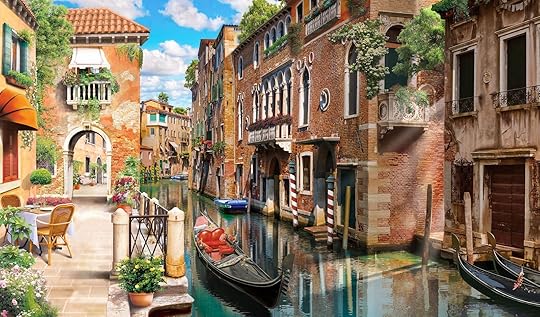
Venice is a city that almost any seasoned traveler can identify, even if they haven’t been there. It’s among the world’s most iconic, lined by canals and traversable by foot, tram, and gondola in a manner that has inspired urban planners the world over. Venice can be quite confusing to identify the right place to stay, so we’ve pulled together a list of the best Airbnbs in Venice in all parts of the city.
We hope you love the spaces and stays we recommend! Just so you know, Matador may collect a small commission from the links on this page if you decide to book a stay, and listed prices are accurate as of the time of publication.
Rialto apartment in the heart of the city
Photo: Airbnb

Photo: Airbnb

Photo: Airbnb
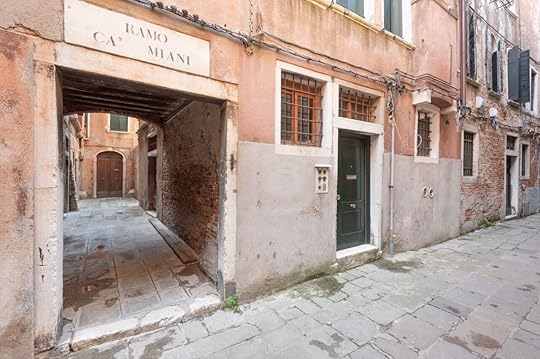
Photo: Airbnb
This Venice Airbnb is the perfect place for a solo getaway to Venice. This cozy apartment is on the third floor of an 18th-century building. The apartment features a lounge area, a fully equipped kitchen, and a comfortable bedroom. This apartment is nestled in the Rialto Mercato area and near places offering fresh fish and local products, and it’s minutes away from the Rialto Bridge.
Two guests, one bedroom
Price: $130 per night

Photo: Airbnb

Photo: Airbnb

Photo: Airbnb
This apartment is owned by a traveling couple who have outfitted it to feel familiar and comfortable. It’s compact but inviting — everything you need for a well-rounded time in Venice including easy access to dining, shops, and gondola rides. The garden view from the living room is worth the cost of admission on its own.
Three quests, one bedroom
Price: $146 per night

Photo: Airbnb

Photo: Airbnb

Photo: Airbnb

Photo: Airbnb
Immerse yourself in the gorgeous view of Camp San Maurizio while staying at this unique apartment. This recently restored apartment features romantic designs throughout and original finishings. The apartment has a spacious living room with a view. The apartment also has a rooftop terrace where you can have dinner under the stars or sit out and listen to classical music from the music conservatory.
Three guests, one bedroom
Price: $178 per night
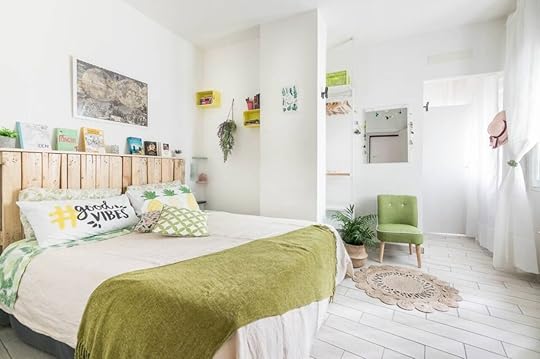
Photo: Airbnb

Photo: Airbnb

Photo: Airbnb
Bright, colorful, and right in the middle of Mestre, this private room is an ideal place to return to after a day of walking around Venice. Good vibes are a plenty here, as it’s tough to feel down in such a cheery ambience, especially when there’s another bottle of wine to open before hopping on the tram for a 10-minute ride into the city.
Two guests, one bedroom
Price: $61 per night

Photo: Airbnb

Photo: Airbnb
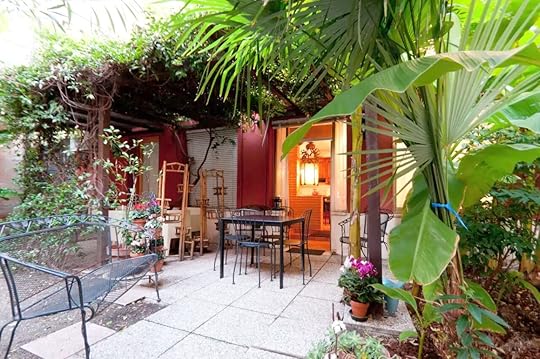
Photo: Airbnb
Back to basics, this place is ideal if you’re after a cozy, well-adorned home that will make you feel as though you’ve actually moved to Venice. Dine outside under the pergola, the garden as your dinner guest — a better place to sip red wine is not found anywhere in the city.
Four guests, one bedroom
Price: $88 per night

Photo: Airbnb
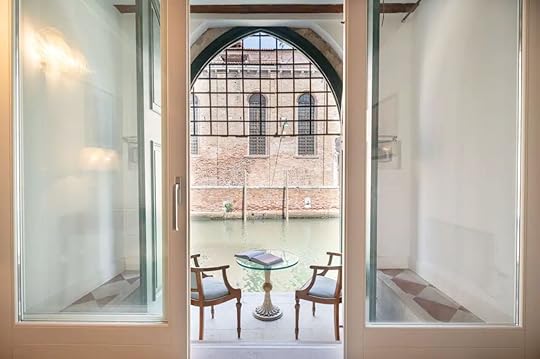
Photo: Airbnb

Photo: Airbnb
Check out this Venetian-styled apartment from the 1600s that has everything you need for a solo or romantic getaway. This apartment is on the first floor, and the entrance has a door that opens up with a canal view where you’re so close you’re touching the water. The apartment is near many attractions like Rialto Bridge and San Marco square.
Two guests, one bedroom
Price: $225 per night

Photo: Airbnb

Photo: Airbnb

Photo: Airbnb
Simplicity in the heart of the city — that can go a long way when visiting a place you’ve never been to before. This apartment offers just that, an efficient and homey vibe that is right in the heart of Venice. A nice kitchen, cozy beds, and a simple, modern living room welcome you back after a day in town.
Four guests, two bedrooms
Price: $170 per night

Photo: Airbnb

Photo: Airbnb
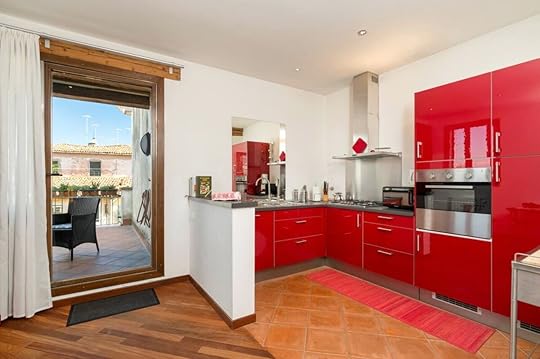
Photo: Airbnb
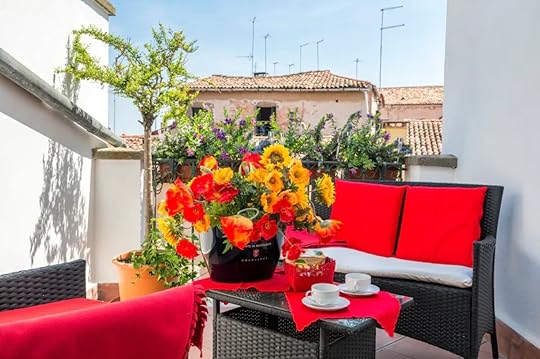
Photo: Airbnb
This quaint place is modern and is located in the heart of an old city giving you the best of both worlds. Its location is central to some of the best dining and nightlife in Venice, shopping too, and both Piazza San Marco and the Biennale are within walking distance. Inside the unit, there is ample lounge space, a gorgeous flower-topped patio, and a bit of privacy that you’ll enjoy after a day strolling the plazas.
Three guests, one bedroom
Price: $241 per night

Photo: Airbnb
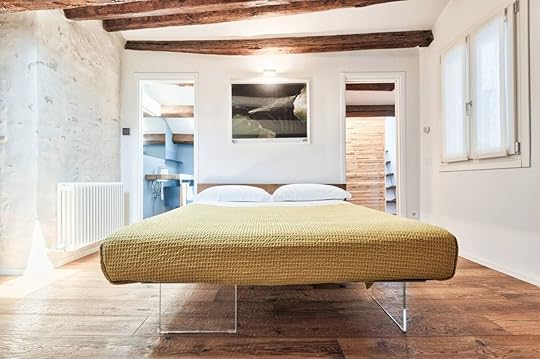
Photo: Airbnb

Photo: Airbnb
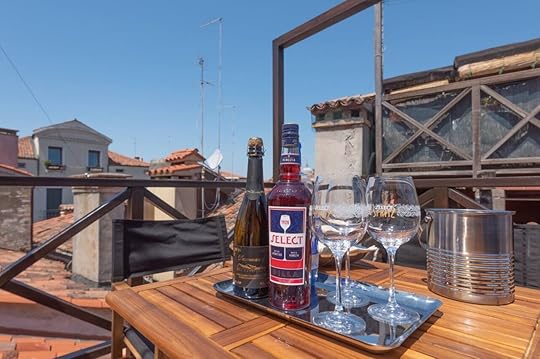
Photo: Airbnb
Gather up some friends and family for a stay at this trendy apartment. This apartment is located on the third ad fourth floors of the apartment complex and in the heart of the Castello district. This stylish apartment features an open living area with a kitchen, dining area, and outdoor patio. Take a walk in the town as the condo is near popular Venice attractions.
Six guests, three bedrooms
Price: $244 per night

Photo: Airbnb

Photo: Airbnb

Photo: Airbnb
There’s nothing that eases waking from a restful night’s sleep like having the drapes around the bed pulled back by golden cherubs. Another fusion of look and location, every detail from the “18th-century” room, the “Chinese” room, the “Arabian-style” indoor garden, and the “Turkish” room is spot on, and immersing yourself in the hallway art collection is an experience in itself. This palazzo captures the international vibe of Venice while being centrally located near sights, bites, and brews.
Nine guests, five bedrooms
Price: $680 per night

Photo: Airbnb
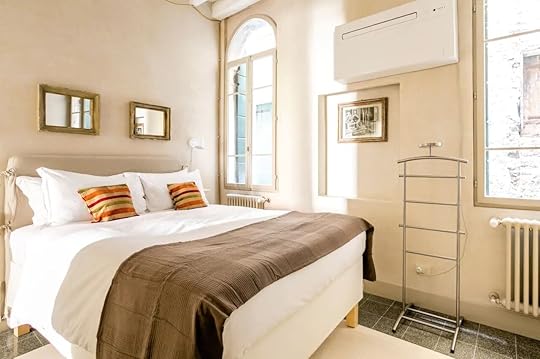
Photo: Airbnb

Photo: Airbnb
Stay at this bright and cozy Venice unit that is situated just a few steps away from San Marco and Rialto. This apartment is on the first floor and features a spacious living room and a fully equipped kitchen.
Four guests, one bedroom
Price: $177 per night

Photo: Airbnb

Photo: Airbnb

Photo: Airbnb
This recently renovated chic apartment is right in the heart of the Cannaregio district. This apartment is near the main terminals, and the main water bus line stops. Take in the Venetian marble floors, relax in the cozy leather chesterfield sofa, or cook a meal in the spacious, fully equipped kitchen.
Six guests, three bedrooms
Price: $240 per night

Photo: Airbnb

Photo: Airbnb
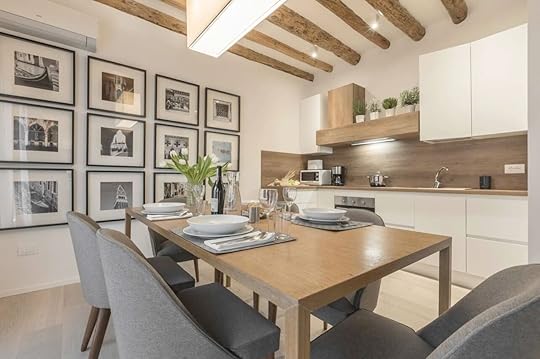
Photo: Airbnb
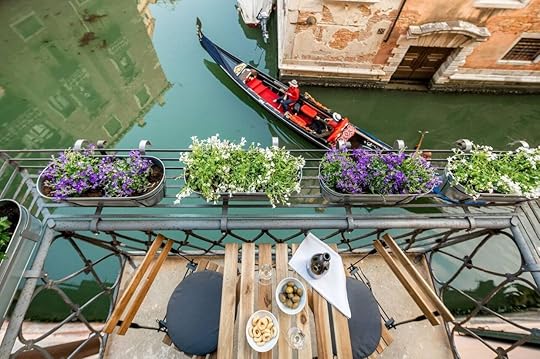
Photo: Airbnb
This brand-new Canaletto apartment features a spacious living room and a well-equipped kitchen, and the apartment is centrally located near all main attractions. Enjoy views of the canal from the balconies of the living and dining room. The apartment is only five minutes from San Marco Square and Rialto Bridge and is close to all the main tourist attractions.
Five guests, two bedrooms
Price: $275 per night

Photo: Airbnb

Photo: Airbnb

Photo: Airbnb

Photo: Airbnb
This Airbnb in Venice features a cozy living area that leads to the terrace and a well-equipped kitchen. The modern apartment is only 200 meters from the beach and only five minutes to Venice by bus, and by boat is only ten minutes. The apartment is in a quiet neighborhood, and nearby is a bakery, newsstand, grocery store, pharmacy, and restaurants and bars.
Four guests, two bedrooms
Price: $135 per night

Photo: Airbnb

Photo: Airbnb

Photo: Airbnb
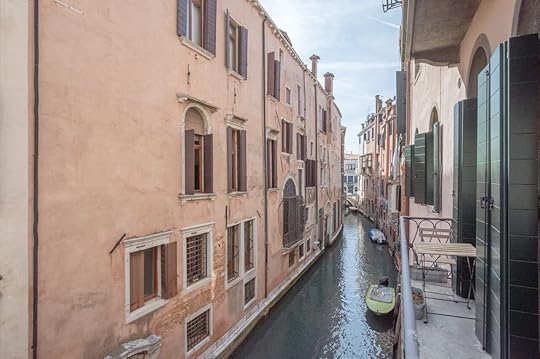
Photo: Airbnb
Welcome to this stunning Airbnb in San Marco, where modern and ancient Venice life mix. This creative apartment tells you about the beautiful city of Venice through its paintings, architecture, and antique objects throughout the apartment. The space features a spacious living and kitchen area and views overlooking the canals below.
Four guests, two bedrooms
Price: $167 per night

Photo: Airbnb

Photo: Airbnb
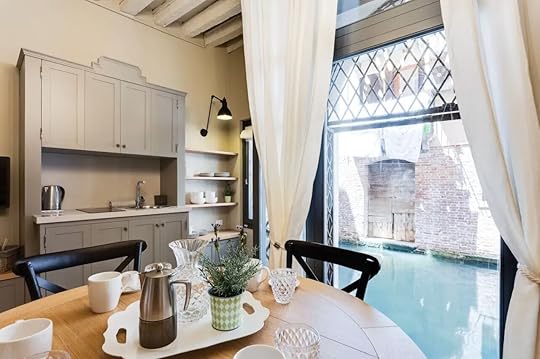
Photo: Airbnb
Take the perfect couple’s vacation to this romantic getaway in Venice. This apartment is nestled between Cannaregio and Castello and is located in the heart of the city is easy to access all the top hot spots in Venice. The apartment features a spacious living room and kitchen with a view.
Four guests, one bedroom
Price: $140 per night

Photo: Airbnb

Photo: Airbnb

Photo: Airbnb

Photo: Airbnb
Stay at this historic luxury apartment in Venice and you’ll get an authentic experience in the heart of the city center. This historical apartment has many unique furnishings throughout the home from different places like Asia, Latin America, and Africa. The space is fully renovated and has a gothic style. Explore the city as the apartment is near markets, local shops, and restaurants.
Five guests, three bedrooms
Price: $332 per night

Photo: Airbnb
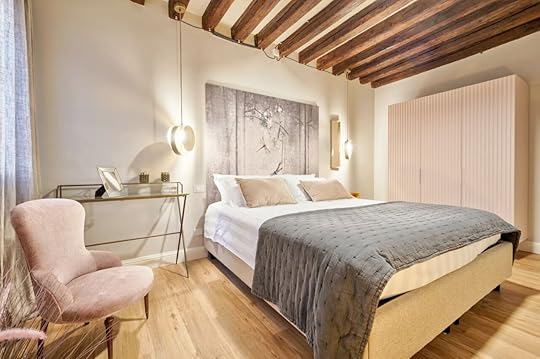
Photo: Airbnb

Photo: Airbnb

Photo: Airbnb
This Airbnb is the perfect space for your Venice getaway. The apartment is located in the Rialto Market, only a few minutes from San Marco, and features a spacious living room and a fully equipped kitchen area. In the living room, you can see a glimpse of the beautiful Grand Canal.
Four guests, two bedrooms
Price: $167 per night

Photo: Airbnb
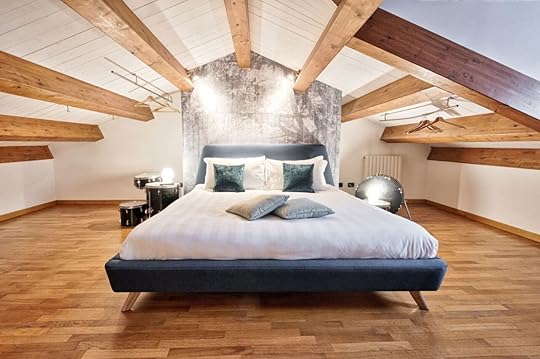
Photo: Airbnb

Photo: Airbnb
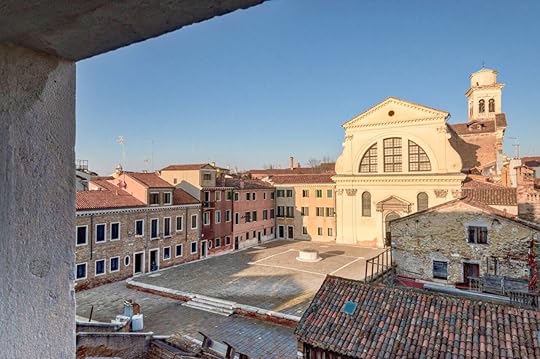
Photo: Airbnb
This modern apartment has three double bedrooms, two bathrooms, a well-equipped kitchen, and a spacious, open living room. The apartment is a few meters from the Zatte, and guests can enjoy stunning views of the canal below, and in front of the apartment, you can see one of the oldest squirrels in Venice, where gondolas are still built.
Six guests, three bedrooms
Price: $167 per night

Photo: Airbnb

Photo: Airbnb

Photo: Airbnb
Relax in this contemporary Venice Airbnb apartment and take in the green interior and the wood of the parquet and ceiling beams. This stylish apartment features a spacious living room, a fully equipped kitchen and dining area, and a cozy bedroom. The apartment is centrally located near the most historical and famous places, such as the Teatro la Fenice, Piazza San Marco, and the Rialto Bridge. 
Four guests, one bedroom
Price: $198 per night
November 17, 2022
How To Get To Acadia National Park Without a Car and Other Park Travel Tips
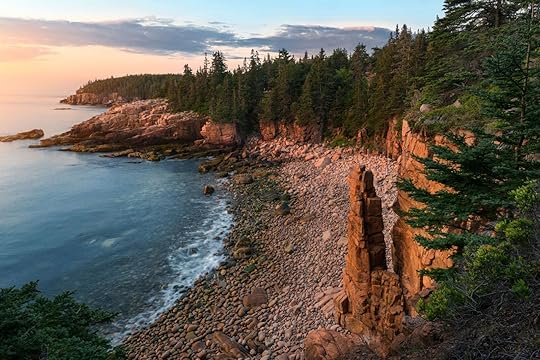
Most of the best US national parks are quite remote, with no major cities nearby. And while you may be thinking of parks in the western US, the fact is that even Acadia National Park, one of the few parks on the East Coast, is still pretty hard to reach. But fortunately, how to get to Acadia National Park doesn’t have to be a challenge thanks to a surprisingly robust public transportation system.
Where is Acadia National Park?Acadia National Park is in southern Maine, making it one of the few national parks in the northeast. The closest town is Bar Harbor, and it’s about a five-hour drive from Boston. If you’re wondering how to get to Acadia National Park by plane, you’ll want to look at flights into Bangor, Maine, which is about 45 miles from the park entrance.
How to get to Acadia National Park without a car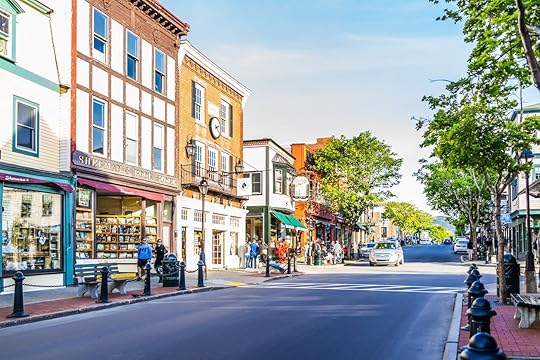
Photo: Kristi Blokhin/Shutterstock
Getting to Acadia National Park without a car can be a challenge, though fortunately, moving around once you’ve arrived is a bit more intuitive. But really, considering that over two million visitors descend upon the park annually, some may argue that minimizing the use of a car is really the only way to go. Fortunately, for environmentally friendly travelers (or city-dwellers who might not have access to cars), figuring out how to get to Acadia National Park doesn’t require tons of money — just a little extra time and effort.
And once you get there, you’re set: the park’s closeness to Bar Harbor means that forgoing a car doesn’t mean you forgoing a memorable experience.
Where is Acadia National Park in relation to the airport?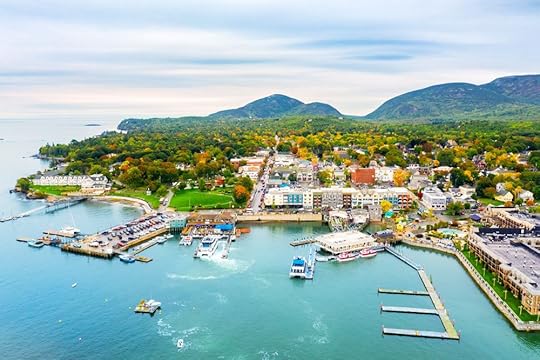
Photo: Mihai_Andritoiu/Shutterstock
Several airlines, including Silver Airways and Cape Air, operate between Boston and the Hancock County-Bar Harbor Airport, just 20 minutes from Bar Harbor. In summer and fall, the free Island Explorer Shuttle provides service between the airport and Bar Harbor every half-hour during the day and every hour at after dark.
While it is slightly farther, major airlines including American, United, and Delta operate in and out of Bangor International Airport, with service from major airports around the country. Downeast Transportation offers bus service between the airport and Bar Harbor from Monday through Friday. The price estimator tool from Lyft thinks you should plan to spend around $75 to $85 for a one-way ride from Bangor to Bar Harbor.
Once you’re in Bar Harbor, you’ll be within walking distance to hotels and dining, and quite close to the actual park, too.
Getting around while you’re there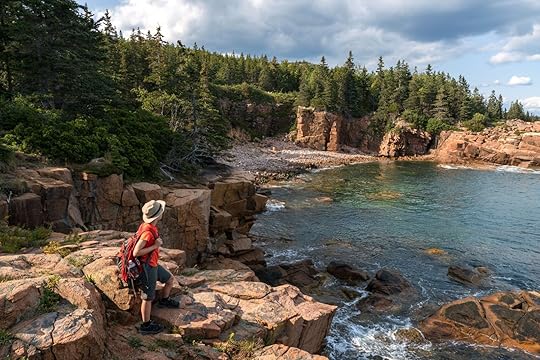
Visitors can walk into the park and reach many of the best trail heads on foot. Photo: Romiana Lee/Shutterstock
The Island Explorer is a free shuttle service with ten routes across Mount Desert Island (where Acadia National Park is) and the Schoodic Peninsula across the water to the east. From Bar Harbor, you can get to all of the area’s attractions and trailheads in and outside the park, including Jordan Pond, the Precipice Trailhead, Sand Beach, and Thunder Hole, to name a few. It even runs to other nearby harbor towns like Southwest Harbor.
Since not all of these routes are in operation year-round (and some have limited schedules during off-seasons), make sure to check the online schedules in advance. The company does an excellent job of keeping the maps and timetables current, and you may want to take a screenshot of the routes on your phone before heading into the park as there are several different lines and schedules.
You might not be able to cover as much ground by foot, but being able to walk from your hotel or Airbnb directly into the forest can be invigorating. And thanks to the membership-supported organization Friends of Acadia (a group busy developing Village Connector Trails for over 20 years), it’s not difficult to make that a reality.
The Village Connector Trails connect the national park’s trail system to Bar Harbor, Southwest Harbor, and Northeast Harbor. Using the Island Explorer and Connector Trails in conjunction with one another is a great way to leave town by foot while still seeing parts of the park that might not be within walking distance in a single day. There aren’t too many national parks with cute towns within walking distance, so you may want to take advantage of having it there. Walking into the park also means you don’t have to deal with traffic or parking, both of which can be a bit of a headache on busy summer weekends.
You can get around by bike, too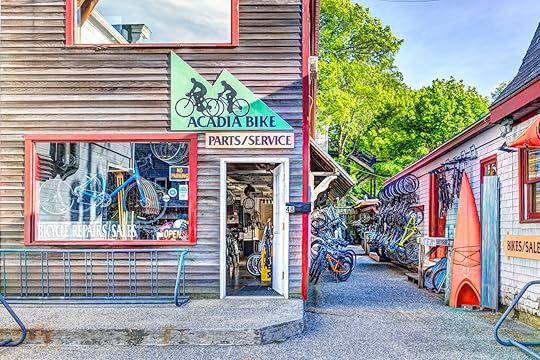
Photo: Kristi Blokhin/Shutterstock
Acadia Bike, in central Bar Harbor, offers a variety of bicycle rental options, including road bikes, mountain bikes, and bikes with carts for kids. From the shop, it’s an easy pedal to the park via Main Street and Park Loop Road. But if you’d rather save your energy, you can catch the Bicycle Express Shuttle, operated by the Island Express.
The park’s 45 miles of historic carriage roads offer a quiet way to get away from the crowds of Park Loop Road and offers a chance to explore the park like people did a century ago — without a car. There are even multiple self-guided cycle tour routes available on the park website that go past Acadia’s best park’s best sights.
Consider renting your bikes in advance if you’re visiting on a busy weekend as the park is one of the most popular in the US. 
Note: A map of the carriage roads can be found online or picked up at the park’s entry stations. You can also opt for an e-bike from shops like Bar Harbor Bike or Island Bike Rentals. They’re a good choice for people with injuries or mobility issues — or for anyone who just doesn’t feel like breakig a sweat that day. 
The 7 Best Places To See Live Music in Austin
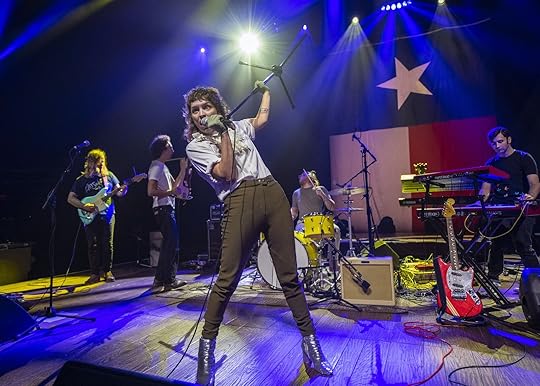
If you’re planning a trip to Austin, seeing live music is a must. Austin is home to some of the best musicians in the world, and music throbs from every corner of the city. And you don’t need to come visit during South by Southwest to experience it. The best part about Austin is you can pretty much head out anywhere, any night of the week and catch a great show. It has over 250 music venues—pretty great for a small town—ranging from smokey old pool rooms filled with Lone Star memorabilia, to modern venues with stadium seating. But if you’re looking for some of the most hallowed places, where musicians like Jerry Lee Lewis and Willie Nelson frequented, check out this list. We’ve rounded up some of the best venues to catch live music in Austin, and maybe in the world, too.
The best Austin music venues all music lovers should know1. Mohawk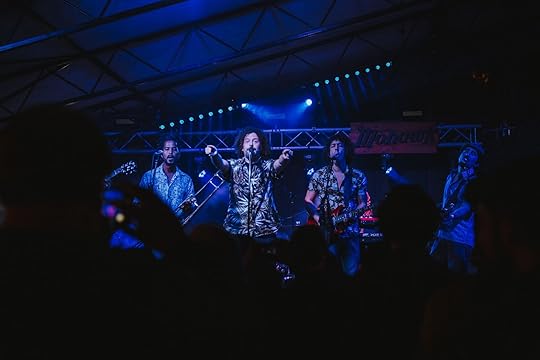
Superfonics. Photo: Mohawk Austin
Located Downtown, Mohawk hosts plenty of traveling acts but what really sets this venue apart is its design. While there is a pit below, above there are layered stands, each with a guard rail to rest your beer. Even if you show up late, you’ll still get a good view of the stage, whether you’re there for indie, punk, or psychedelic rock.
Where: 912 Red River St, Austin, TX 78701
2. Broken SpokeIf you’re looking for a two-step dance hall, or for the best chicken-fried steak in town, head to the Broken Spoke. The stage has been graced by Dolly Parton, George Strait, and Willie himself, but the dance hall is popular among young people looking for a low key night out, Austin locals, and tourists who want to get a taste of the honky tonk spirit.
Where: 3201 S Lamar Blvd, Austin, TX 78704
3. Historic Scoot InnThe Historic Scoot Inn opened its doors in 1871 as a grocery store and is one of the few original Austin music venues still standing. Transformed into a saloon featuring live music in the 1950s, it’s still one of the best places in the city to grab a beer and a show. A separate bar inside features piano performances as well.
Where: 1308 E 4th St, Austin, TX 78702
4. Donn’s DepotA dueling piano bar in an old railroad depot? Sounds intriguing, but if that doesn’t convince you, come for the live music, and stay for the dancing locals who dominate the dance floor all night. Oh, and don’t forget that the whole place is decked out in Christmas decorations. No matter the night, Donn’s is a great spot to hit the floor and listen to some live music. But if Donn and the Station Master’s are on, you’re in for a real treat.
Where: 1600 W 5th St, Austin, TX 78703
5. Stubb’s BBQ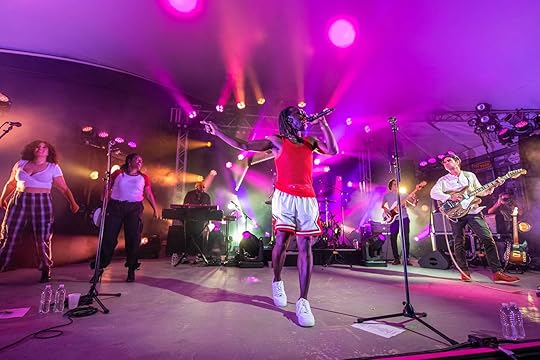
The Black Pumas. Photo: David Brendan Hall
Right across the street from Mohawk is Stubb’s BBQ. This combination restaurant and music venue hosts a gospel brunch, concerts, and serves barbecue. While it doesn’t have stands, there is no spot without a good view. Going to a show here is great because there’s delicious barbecue on hand to eat while you listen, and because it’s located in the Red River district, going out for a post-show drink is as easy as walking down the street.
Where: 801 Red River St, Austin, TX 78701
6. The Continental ClubThe Continental Club opened its doors on South Congress in 1955, and is one of the only music venues on Austin’s famous shopping street. Originally a supper club, it’s now a great spot to catch live music any night of the week. Don’t miss the speakeasy upstairs which features secret shows and a great atmosphere as well.
Where: 1315 S Congress Ave, Austin, TX 78704
7. ACL Live at Moody Theater
Sweet Spirit. Photo: David Brendan Hall
With one of the longest running music series in television history, seeing a show (or recording) at ACL Live is a must for anyone serious about music. With over 100 concerts a year, this is where all of the artists on tour stop to be a part of history. The only problem is parking, so take a rideshare here.
Where: 310 W Willie Nelson Blvd, Austin, TX 78701 
Matador Network's Blog
- Matador Network's profile
- 6 followers



